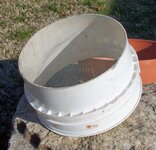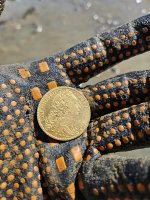cwwj123
Jr. Member
Hey guys,
I'm relatively new to the hobby of Gold panning. I've been out quite a bit this summer and even found some color. However, as you know panning isn't easy. What I would like to know is what do you use for classifying material? Did you make your own classifier(s) or buy them? Since i'm in MN and the gold is fine my 1/2 inch Garrett that came with my 14' pan is useless. I've been looking at DIY and for sale classifiers and have been wanting to make my own, however, I just want something sturdy and reliable. Whats your experience? Or advice? Thanks guys!
I'm relatively new to the hobby of Gold panning. I've been out quite a bit this summer and even found some color. However, as you know panning isn't easy. What I would like to know is what do you use for classifying material? Did you make your own classifier(s) or buy them? Since i'm in MN and the gold is fine my 1/2 inch Garrett that came with my 14' pan is useless. I've been looking at DIY and for sale classifiers and have been wanting to make my own, however, I just want something sturdy and reliable. Whats your experience? Or advice? Thanks guys!
Upvote
0





